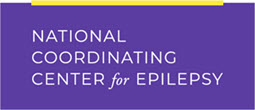The preteen and early teen years are difficult for everyone. It is a time of great change, new challenges and impulsivity. For an adolescent with epilepsy, the risks and insecurities that go along with this period are increased.
Teenage years are often a time when standing out is the last thing someone wants. A lot of teens feel awkward and self-conscious, and this can be heightened for teenagers with epilepsy.
- They may be embarrassed of their epilepsy diagnosis.
- They may be frightened of having a seizure in public.
- They may experience side effects of their medication, which may affect their concentration or their physical appearance.
Once a youth with epilepsy reaches puberty, it is important that they go to their primary care physician for a yearly check-up and visit their neurologist regularly. The physical changes of puberty could require an adjustment to medication.
Some teens may want to stop taking their epilepsy medications. They may feel like they no longer need epilepsy medications or that they do not want their life dictated by the medication. It is important that the risk of stopping medications is made clear to the teen by their parents/caregivers and physicians. Teens may need to be reminded what it was like when they had regular seizures if they are no longer experiencing them.
Restrictions on activities can further accentuate differences from others and can place stress on relationships with peers including friends and dating partners. For example, teens with epilepsy may not be able to drive. They may be at higher risk for seizures with triggers such as missed sleep or substance use.
It is important for parents/caregivers and physicians to address challenges and concerns with the teen as part of their guidance navigating the teenage experience.
For more information on teens with epilepsy and helping parents of teenagers with epilepsy support their children, visit HealthyChildren.org.
Additional Resources
For more details, check out these helpful resources:
- Healthy Children: How to Support a Child with Epilepsy
- Epilepsy Foundation: Teens
- WebMD: Epilepsy and Teens
Last Updated
06/15/2022
Source
American Academy of Pediatrics
